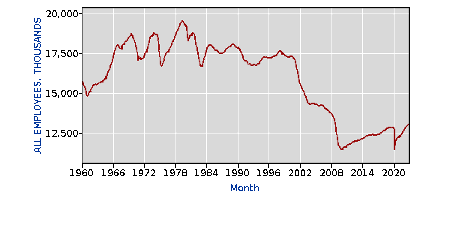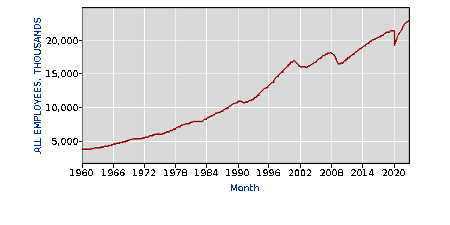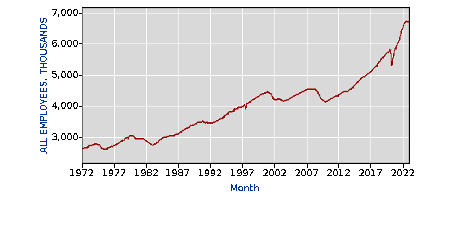Three Industry Sectors with Large Impact on Site Selection Strategies
by King White, on Mar 3, 2023 8:23:16 AM
The site selection industry is very cyclical, driven by various industries expanding and contracting over time due to macroeconomic trends. When you are in an expansionary cycle, it is the best of times with a solid pipeline of site selection projects. During contractions, you count the days until the cycle ends and develop a plan to be more prepared the next time. To help assess these cycles, we evaluated three industry sectors that have historically been significant drivers of site selection trends in onshore, nearshore and offshore geographies.
The manufacturing industry is where the site selection industry began
Site selection and economic development roots date to the 1950s as the U.S. emerged from a post-war economic climate. In 1948, Edgar M. Hoover wrote a book called “The Location of Economic Activity” about the site selection process which focused on the criteria for industrial site selection. Most of the same criteria exist today which includes the availability and cost of raw materials, transportation, labor, real estate, utilities and infrastructure.
The below graph illustrates why site selection strategies became critical as the industrial sector grew rapidly in the 1960s and 1970s which made finding the optimal location for manufacturing plants so critical as the necessary infrastructure was being developed. Employment in the sector peaked in the late 1970s with approximately 19 million workers.
The manufacturing sector began its massive decline due to offshoring in the late 1990s which rocked the industry for three decades. A U.S. industrial renaissance slowly dawned after the Great Recession and spiked during COVID-19 as the pandemic disrupted global supply chains. Employment in the sector has grown to approximately 13 million in 2023. As a result, using proven site selection methodologies for industrial projects has become critical for companies. Demand for site selection services has grown as more companies compete for sites, resources and infrastructure to support their production needs.
U.S. Manufacturing Employment
1960-2020
 Professional and business services emerged as the fastest-growing sector
Professional and business services emerged as the fastest-growing sector
The professional and business services sector employs nearly 23 million workers. The sector, which continues to expand, includes a broad range of corporate operations such as headquarters, software development, call centers, shared service centers and other front-office and back-office operations.
As the U.S. economy shifted to a technology-based economy in the 1990s, the professional and business services sector exploded along with the need to implement site selection strategies as competition for talent intensified. Offshore countries such as India and the Philippines reaped the benefit — creating a massive wave of jobs to support U.S. companies. The below graph illustrates the steady growth of the sector and how it will most likely continue to be one of the biggest job creators in the U.S. economy as long as the labor markets can support it.
U.S. Professional & Business Services Employment
1960-2022
 Transportation and warehouse sector rapidly expanded with e-commerce growth
Transportation and warehouse sector rapidly expanded with e-commerce growth
The transportation and warehouse sector, which employs nearly 7 million workers in the U.S., has become a staple industry that enables products and materials to move across the global supply chain.
The growth of the industry parallels the rapid growth of e-commerce and coincided with global supply chain disruptions caused by the COVID-19 pandemic. Companies such as Amazon created a frenzy of site selection activity across the U.S. which created a shortage of real estate.
As a result, distribution centers have been the most active site selection projects in this sector. From a site selection perspective, it is critical that companies utilize an integrated approach to carefully evaluate transportation costs, labor conditions, real estate and economic incentives to find the optimal location to expand. The following graph illustrates the steady growth of the sector which appears to be peaking in recent months.
Transportation & Warehouse Employment
1972-2022

Conclusions
The art of site selection has evolved over the last 80 years. It is critical that companies of all types carefully evaluate site selection factors such as labor availability, labor costs, logistics, utilities, infrastructure, economic incentives and real estate to find the locations best for their needs. If you anticipate seeking a location for your next manufacturing plant, headquarters, distribution center, call center or software development center, then you should consider a qualified site selection consultant to assist you given the complexity of the process.
